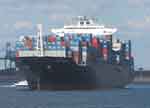Activity 2: Skills and Best Practices
Computers in the Social Studies Classroom
Twenty years ago, the Internet was a vast wasteland of promising sites that delivered very little in the way of reliable information. Today it is just the opposite. Today, the Internet is an opportunity for students to do research and find educational resources available nowhere else. In addition, it is a wonderful tool for communicating with others.This site, http://www.socialstudieshelp.com, not only discuses the educational value of the Internet, but it also provide tips on how to use the Internet today with your students. The site discusses the implications for the Internet for teaching including:
- Research Opportunities
- Educational Resources
- Access to Government Sites
- Access to Graphics
- A Discussion of the Hands-on Interactive Nation of the Internet
- The Capabilities of the Internet for People of Similar Interests
Using Maps in the Social Studies Classroom
Overview of Lesson Plan: Students evaluate the different types of historical and geographical information that one can gather through close study of maps throughout the course of time. Students analyze various maps spanning the 16th through the 19th centuries, as well as create maps of their own. Website: http://www.nytimes.com/lessons/Review the Academic Content Standards related to this lesson.
Maps and map making are a part of every social studies lesson. Indeed, other curriculum areas use maps to place events in time and space. This 45-minute lesson provides an excellent summary of how to use maps in the social studies classroom including:
- Excellent activities and resources for using maps in the classroom
- A vocabulary list for use in teaching about maps and for building word walls related to map usage
- Extension activities for student enrichment
- Way to build in interdisciplinary connections when teaching about maps
- Links to other sites related to the use of maps in instruction

 Module Menu
Module Menu Printable View
Printable View